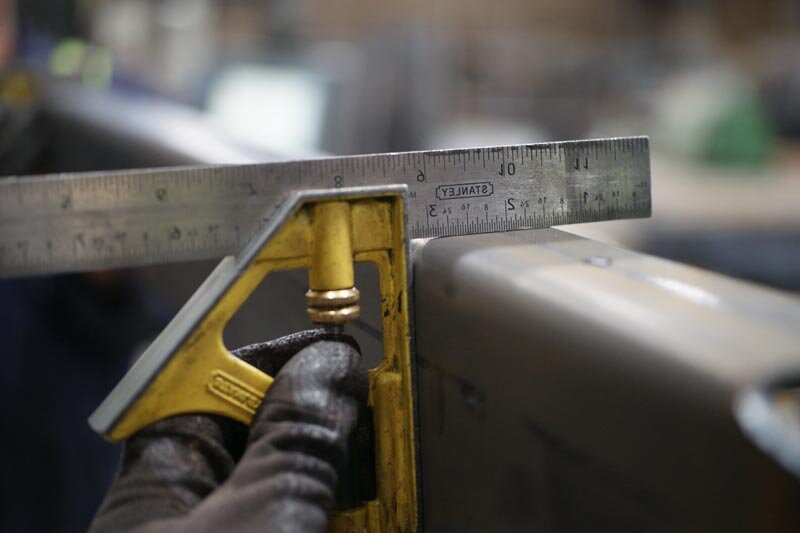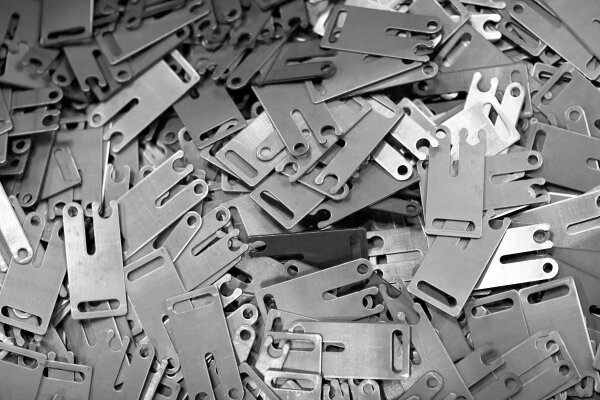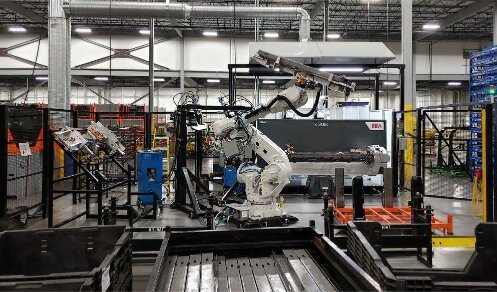Is uw project gericht op precisie en efficiëntie? Dan bent u waarschijnlijk aan het discussiëren of u CNC-frezen of CNC-draaien moet kiezen. Beide zijn uitstekende bewerkingsmethoden, maar ze hebben elk hun sterke punten. Door de juiste te kiezen kunt u tijd en geld besparen en de kwaliteit van uw product verbeteren.
CNC frezen is ideaal voor onderdelen met complexe vormen en eigenschappen zoals gaten, sleuven of ingewikkelde contouren. Het gebruikt een roterend gereedschap om vanuit verschillende hoeken in het werkstuk te snijden. CNC draaien is het beste voor ronde, cilindrische onderdelen. Het werkstuk roteert terwijl het snijgereedschap stationair blijft. Beide processen bieden precisie, maar verschillen in de manier waarop ze materiaal verwijderen.
Als je wilt weten wanneer je elk proces moet gebruiken, lees dan verder. Het zal je helpen om de beste methode voor je volgende project te bepalen.
Wat is CNC frezen?
CNC frezen is een nauwkeurig bewerkingsproces dat materiaal van een werkstuk verwijdert. Het wordt bestuurd door een computerprogramma dat de beweging van het snijgereedschap langs verschillende assen leidt. Dit zorgt voor een hoge nauwkeurigheid en veelzijdigheid bij de productie.
CNC frezen gebruikt roterende frezen om materiaal van een werkstuk te verwijderen. Het werkstuk blijft stilstaan terwijl het snijgereedschap langs verschillende assen beweegt. Het proces kan verschillende vormen creëren, van eenvoudig tot complex, met nauwe toleranties.
Belangrijkste kenmerken van CNC-frezen
- Precisie: CNC frezen levert een hoge nauwkeurigheid, waardoor het geschikt is voor complexe onderdelen.
- Flexibiliteit: Het kan met verschillende materialen werken, zoals metalen, kunststoffen en composieten.
- Meerdere assen: CNC freesmachines werken vaak op 3 tot 5 assen, wat meer flexibiliteit biedt voor ingewikkelde ontwerpen.
- Automatisering: Het proces is computergestuurd, wat menselijke fouten minimaliseert en de herhaalbaarheid verhoogt.
Veelvoorkomende toepassingen van CNC frezen
CNC frezen wordt gebruikt in verschillende industrieën, waaronder:
- Ruimtevaart: Voor onderdelen die hoge precisie en sterkte vereisen.
- Automotive: Complexe motoronderdelen maken.
- Medisch: Voor het maken van protheses en implantaten op maat.
- Elektronica: Voor het maken van behuizingen en behuizingen voor apparaten.
Voor- en nadelen van CNC frezen
Voordelen:
- Hoge precisie: Het kan zeer nauwe toleranties bereiken.
- Complexe vormen: In staat om ingewikkelde onderdelen met hoge nauwkeurigheid te produceren.
- Veelzijdigheid: Kan worden gebruikt met een breed scala aan materialen.
Minpunten:
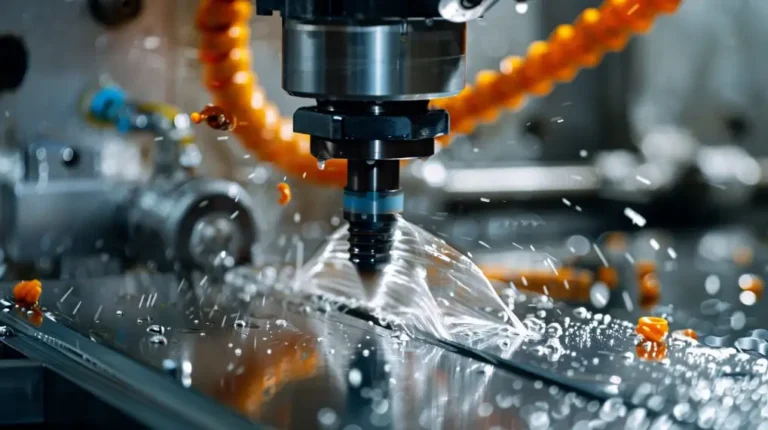
Wat is CNC draaien?
CNC-draaien is een ander populair bewerkingsproces waarbij het werkstuk roteert terwijl het snijgereedschap stationair blijft. Dit proces is ideaal voor het maken van onderdelen met cilindrische of sferische vormen en staat bekend om zijn efficiëntie en nauwkeurigheid.
CNC draaien maakt gebruik van een roterend werkstuk en een stationair snijgereedschap om materiaal te verwijderen. De machine beweegt langs meerdere assen om het materiaal een cilindrische, conische of bolvormige vorm te geven. De machine wordt bestuurd door een computerprogramma, wat zorgt voor een constante precisie tijdens het hele proces.
Belangrijkste kenmerken van CNC-draaien
- Cilindrische Vormen: CNC-draaien wordt het meest gebruikt voor onderdelen met draaisymmetrie, zoals assen, buizen en wielen.
- Efficiëntie: Het is een zeer efficiënt proces, vooral voor onderdelen die massaproductie vereisen.
- Eenvoud: Het proces is vaak eenvoudiger dan CNC-frezen voor ronde of symmetrische onderdelen.
- Automatisering: Net als CNC frezen wordt CNC draaien computergestuurd, wat menselijke fouten vermindert en de herhaalbaarheid verbetert.
Veelvoorkomende toepassingen van CNC-draaien
CNC-draaien wordt in verschillende industrieën veel gebruikt voor onderdelen die een ronde vorm nodig hebben, zoals:
- Automotive: Voor de productie van assen, tandwielen en motoronderdelen.
- Ruimtevaart: Voor het maken van onderdelen zoals turbinebladen en andere roterende onderdelen.
- Medisch: Voor het produceren van onderdelen zoals tandheelkundige implantaten en chirurgisch gereedschap.
- Olie & gas: Dit wordt gebruikt om kleppen en fittingen te maken.
Voor- en nadelen van CNC-draaien
Voordelen:
- Efficiëntie: CNC draaien is sneller dan andere bewerkingsprocessen voor cilindrische onderdelen.
- Kosteneffectief: Het is vaak voordeliger voor massaproductie van cilindrische onderdelen.
- Hoge precisie: Biedt uitstekende nauwkeurigheid voor onderdelen met circulaire of rotatiesymmetrie.
Minpunten:
- Beperkt tot cilindrische vormen: CNC draaien is het meest geschikt voor onderdelen met rotatiesymmetrie, dus het is niet ideaal voor complexe vormen.
- Slijtage gereedschap: Net als bij CNC-frezen kunnen de snijgereedschappen na verloop van tijd slijten, waardoor de onderhoudskosten toenemen.
- Groottebeperkingen: Grotere onderdelen kunnen moeilijker of onpraktisch te bewerken zijn met CNC-draaien.
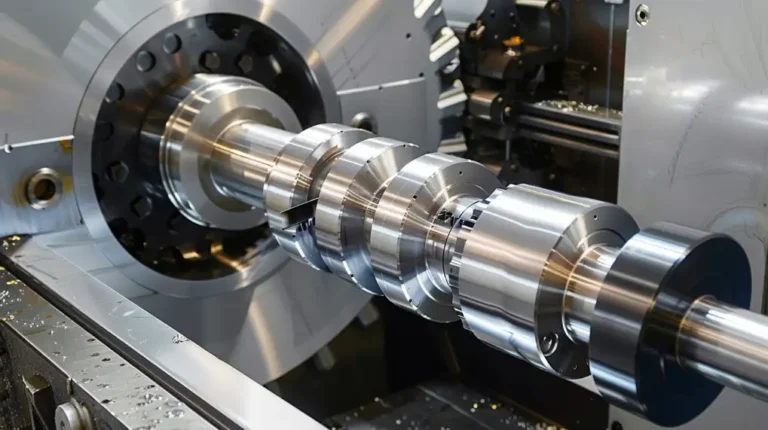
Belangrijkste verschillen tussen CNC-frezen en -draaien
Inzicht in de verschillen tussen CNC frezen en draaien is essentieel bij het maken van een keuze tussen de twee voor uw project. Hier volgt een overzicht van de belangrijkste factoren waarmee je rekening moet houden bij het kiezen van de juiste methode voor je onderdelen.
Materiaal compatibiliteit
Zowel CNC frezen als draaien kunnen met verschillende materialen werken. Ze blinken echter uit met verschillende materialen. CNC draaien is het beste voor metalen zoals staal, aluminium en messing. Het werkt goed voor onderdelen met cilindrische vormen.
CNC frezen is ook geschikt voor metalen, maar het is veelzijdiger. Het kan overweg met kunststoffen, composieten en niet-metalen materialen. Frezen is vooral nuttig als het onderdeel complexe vormen heeft.
Complexiteit van onderdeelgeometrie
CNC frezen is beter voor onderdelen die complexe vormen, onregelmatige oppervlakken of meerdere gaten nodig hebben. Het kan ingewikkelde ontwerpen maken die ideaal zijn voor aangepaste of gedetailleerde onderdelen.
CNC draaien is het beste voor symmetrische of cilindrische onderdelen. Dit zijn bijvoorbeeld assen, tandwielen en katrollen. Hoewel draaien een hoge precisie biedt, heeft het zijn beperkingen als het gaat om complexere ontwerpen.
Werkstukbeweging
Bij CNC frezen blijft het werkstuk stilstaan terwijl het snijgereedschap draait om materiaal te verwijderen. Deze opstelling biedt meer flexibiliteit voor het vormen en snijden van verschillende onderdelen.
CNC draaien werkt door het draaien van het werkstuk terwijl het snijgereedschap vast blijft staan. Dit is ideaal voor het vormen van cilindrische onderdelen, maar minder geschikt voor onregelmatige vormen.
Snijgereedschappen
CNC frezen maakt gebruik van verschillende roterende snijgereedschappen zoals frezen, boren en vlakfrezen. Deze gereedschappen zijn er in verschillende vormen en maten, waardoor een breed scala aan functies kan worden gecreëerd, zoals sleuven, gaten en contouren.
CNC draaien maakt gebruik van een vast snijgereedschap dat over het roterende werkstuk beweegt. Het gereedschap gebruikt meestal draaiende beitelplaatjes of boren, die effectief zijn voor het vormen van cilindrische vormen.
Typen onderdelen die het meest geschikt zijn voor elk proces
CNC frezen is perfect voor onderdelen die gedetailleerde ontwerpen, complexe vormen of niet-cilindrische vormen vereisen. Het wordt vaak gebruikt in de ruimtevaart, auto-industrie, medische apparatuur en aangepaste productie-industrieën.
CNC draaien is ideaal voor massaproductie van symmetrische, ronde onderdelen zoals assen, ringen en bussen. Het is zeer efficiënt voor grote productieseries waarbij precisie en oppervlakteafwerking essentieel zijn.
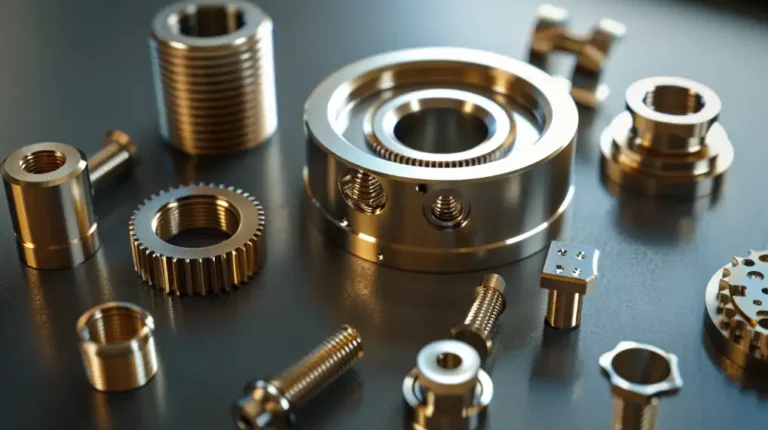
Kiezen tussen CNC-frezen en -draaien
Kies het juiste proces door het af te stemmen op de vereisten van je onderdeel. Hier ziet u wanneer elke methode het beste werkt:
Wanneer CNC frezen kiezen?
- Uw onderdeel heeft complexe 3D-contouren of organische vormen
- Je hebt nauwkeurige vlakke oppervlakken of hoekige elementen nodig
- Het ontwerp vereist diepe zakken, ingewikkelde sleuven of ondersnijdingen
- Je werkt met taaie materialen (gereedschapsstaal, titanium)
- Het onderdeel heeft meerdere bewerkingen op verschillende oppervlakken
- Je hebt nauwe toleranties nodig op niet-cilindrische vormen
- Prototyping of productie van kleine volumes waar flexibiliteit van belang is
Wanneer CNC draaien kiezen?
- Je onderdeel is voornamelijk cilindrisch of rotatiesymmetrisch
- Je hebt uitstekende concentriciteit of rondheid nodig
- Het ontwerp heeft consistente diameters langs een as
- Je produceert grote hoeveelheden identieke onderdelen
- Kostenefficiëntie is cruciaal voor eenvoudige geometrieën
- Je hebt een snelle productie van ronde onderdelen nodig
Conclusie
CNC frezen en draaien zijn beide nauwkeurige bewerkingsprocessen, maar ze zijn geschikt voor verschillende projecten. CNC frezen werkt het best voor onderdelen met complexe vormen, gedetailleerde kenmerken en niet-draaiende ontwerpen. CNC draaien is efficiënter voor cilindrische of rotatiesymmetrische onderdelen. De juiste keuze hangt af van de complexiteit van het onderdeel, het materiaal en de productievereisten.
Klaar om aan je volgende project te beginnen? Neem contact met ons op vandaag nog om uw CNC frees- of draaiwerk te bespreken en laat ons u helpen uw ontwerpen met precisie en efficiëntie tot leven te brengen.
Meer bronnen:
CNC-bewerkingsnauwkeurigheid en -toleranties - Bron: 3ERP
Materialen voor CNC-bewerking - Bron: Fictiv
Hey, ik ben Kevin Lee

De afgelopen 10 jaar heb ik me verdiept in verschillende vormen van plaatbewerking en ik deel hier de coole inzichten die ik heb opgedaan in verschillende werkplaatsen.
Neem contact op

Kevin Lee
Ik heb meer dan tien jaar professionele ervaring in plaatbewerking, gespecialiseerd in lasersnijden, buigen, lassen en oppervlaktebehandelingstechnieken. Als technisch directeur bij Shengen zet ik me in om complexe productie-uitdagingen op te lossen en innovatie en kwaliteit in elk project te stimuleren.
Verwante bron
Wat beïnvloedt de doorlooptijd van plaatbewerking? Een volledig overzicht
Hoe stabiele en stijve frames voor plaatmetalen machines bouwen?
Metalen onderdelen ontwerpen voor geautomatiseerde machines?
- Hogere kosten: CNC frezen kan duurder zijn dan eenvoudigere processen zoals draaien.
- Beperkt tot bepaalde vormen: Hoewel het geweldig is voor complexe vormen, is het misschien niet zo efficiënt voor lange, cilindrische onderdelen.
- Slijtage gereedschap: De snijgereedschappen kunnen bij bepaalde materialen sneller slijten, wat tot extra kosten leidt.

Wat is CNC draaien?
CNC-draaien is een ander populair bewerkingsproces waarbij het werkstuk roteert terwijl het snijgereedschap stationair blijft. Dit proces is ideaal voor het maken van onderdelen met cilindrische of sferische vormen en staat bekend om zijn efficiëntie en nauwkeurigheid.
CNC draaien maakt gebruik van een roterend werkstuk en een stationair snijgereedschap om materiaal te verwijderen. De machine beweegt langs meerdere assen om het materiaal een cilindrische, conische of bolvormige vorm te geven. De machine wordt bestuurd door een computerprogramma, wat zorgt voor een constante precisie tijdens het hele proces.
Belangrijkste kenmerken van CNC-draaien
- Cilindrische Vormen: CNC-draaien wordt het meest gebruikt voor onderdelen met draaisymmetrie, zoals assen, buizen en wielen.
- Efficiëntie: Het is een zeer efficiënt proces, vooral voor onderdelen die massaproductie vereisen.
- Eenvoud: Het proces is vaak eenvoudiger dan CNC-frezen voor ronde of symmetrische onderdelen.
- Automatisering: Net als CNC frezen wordt CNC draaien computergestuurd, wat menselijke fouten vermindert en de herhaalbaarheid verbetert.
Veelvoorkomende toepassingen van CNC-draaien
CNC-draaien wordt in verschillende industrieën veel gebruikt voor onderdelen die een ronde vorm nodig hebben, zoals:
- Automotive: Voor de productie van assen, tandwielen en motoronderdelen.
- Ruimtevaart: Voor het maken van onderdelen zoals turbinebladen en andere roterende onderdelen.
- Medisch: Voor het produceren van onderdelen zoals tandheelkundige implantaten en chirurgisch gereedschap.
- Olie & gas: Dit wordt gebruikt om kleppen en fittingen te maken.
Voor- en nadelen van CNC-draaien
Voordelen:
- Efficiëntie: CNC draaien is sneller dan andere bewerkingsprocessen voor cilindrische onderdelen.
- Kosteneffectief: Het is vaak voordeliger voor massaproductie van cilindrische onderdelen.
- Hoge precisie: Biedt uitstekende nauwkeurigheid voor onderdelen met circulaire of rotatiesymmetrie.
Minpunten:
- Beperkt tot cilindrische vormen: CNC draaien is het meest geschikt voor onderdelen met rotatiesymmetrie, dus het is niet ideaal voor complexe vormen.
- Slijtage gereedschap: Net als bij CNC-frezen kunnen de snijgereedschappen na verloop van tijd slijten, waardoor de onderhoudskosten toenemen.
- Groottebeperkingen: Grotere onderdelen kunnen moeilijker of onpraktisch te bewerken zijn met CNC-draaien.

Belangrijkste verschillen tussen CNC-frezen en -draaien
Inzicht in de verschillen tussen CNC frezen en draaien is essentieel bij het maken van een keuze tussen de twee voor uw project. Hier volgt een overzicht van de belangrijkste factoren waarmee je rekening moet houden bij het kiezen van de juiste methode voor je onderdelen.
Materiaal compatibiliteit
Zowel CNC frezen als draaien kunnen met verschillende materialen werken. Ze blinken echter uit met verschillende materialen. CNC draaien is het beste voor metalen zoals staal, aluminium en messing. Het werkt goed voor onderdelen met cilindrische vormen.
CNC frezen is ook geschikt voor metalen, maar het is veelzijdiger. Het kan overweg met kunststoffen, composieten en niet-metalen materialen. Frezen is vooral nuttig als het onderdeel complexe vormen heeft.
Complexiteit van onderdeelgeometrie
CNC frezen is beter voor onderdelen die complexe vormen, onregelmatige oppervlakken of meerdere gaten nodig hebben. Het kan ingewikkelde ontwerpen maken die ideaal zijn voor aangepaste of gedetailleerde onderdelen.
CNC draaien is het beste voor symmetrische of cilindrische onderdelen. Dit zijn bijvoorbeeld assen, tandwielen en katrollen. Hoewel draaien een hoge precisie biedt, heeft het zijn beperkingen als het gaat om complexere ontwerpen.
Werkstukbeweging
Bij CNC frezen blijft het werkstuk stilstaan terwijl het snijgereedschap draait om materiaal te verwijderen. Deze opstelling biedt meer flexibiliteit voor het vormen en snijden van verschillende onderdelen.
CNC draaien werkt door het draaien van het werkstuk terwijl het snijgereedschap vast blijft staan. Dit is ideaal voor het vormen van cilindrische onderdelen, maar minder geschikt voor onregelmatige vormen.
Snijgereedschappen
CNC frezen maakt gebruik van verschillende roterende snijgereedschappen zoals frezen, boren en vlakfrezen. Deze gereedschappen zijn er in verschillende vormen en maten, waardoor een breed scala aan functies kan worden gecreëerd, zoals sleuven, gaten en contouren.
CNC draaien maakt gebruik van een vast snijgereedschap dat over het roterende werkstuk beweegt. Het gereedschap gebruikt meestal draaiende beitelplaatjes of boren, die effectief zijn voor het vormen van cilindrische vormen.
Typen onderdelen die het meest geschikt zijn voor elk proces
CNC frezen is perfect voor onderdelen die gedetailleerde ontwerpen, complexe vormen of niet-cilindrische vormen vereisen. Het wordt vaak gebruikt in de ruimtevaart, auto-industrie, medische apparatuur en aangepaste productie-industrieën.
CNC draaien is ideaal voor massaproductie van symmetrische, ronde onderdelen zoals assen, ringen en bussen. Het is zeer efficiënt voor grote productieseries waarbij precisie en oppervlakteafwerking essentieel zijn.

Kiezen tussen CNC-frezen en -draaien
Kies het juiste proces door het af te stemmen op de vereisten van je onderdeel. Hier ziet u wanneer elke methode het beste werkt:
Wanneer CNC frezen kiezen?
- Uw onderdeel heeft complexe 3D-contouren of organische vormen
- Je hebt nauwkeurige vlakke oppervlakken of hoekige elementen nodig
- Het ontwerp vereist diepe zakken, ingewikkelde sleuven of ondersnijdingen
- Je werkt met taaie materialen (gereedschapsstaal, titanium)
- Het onderdeel heeft meerdere bewerkingen op verschillende oppervlakken
- Je hebt nauwe toleranties nodig op niet-cilindrische vormen
- Prototyping of productie van kleine volumes waar flexibiliteit van belang is
Wanneer CNC draaien kiezen?
- Je onderdeel is voornamelijk cilindrisch of rotatiesymmetrisch
- Je hebt uitstekende concentriciteit of rondheid nodig
- Het ontwerp heeft consistente diameters langs een as
- Je produceert grote hoeveelheden identieke onderdelen
- Kostenefficiëntie is cruciaal voor eenvoudige geometrieën
- Je hebt een snelle productie van ronde onderdelen nodig
Conclusie
CNC frezen en draaien zijn beide nauwkeurige bewerkingsprocessen, maar ze zijn geschikt voor verschillende projecten. CNC frezen werkt het best voor onderdelen met complexe vormen, gedetailleerde kenmerken en niet-draaiende ontwerpen. CNC draaien is efficiënter voor cilindrische of rotatiesymmetrische onderdelen. De juiste keuze hangt af van de complexiteit van het onderdeel, het materiaal en de productievereisten.
Klaar om aan je volgende project te beginnen? Neem contact met ons op vandaag nog om uw CNC frees- of draaiwerk te bespreken en laat ons u helpen uw ontwerpen met precisie en efficiëntie tot leven te brengen.
Meer bronnen:
CNC-bewerkingsnauwkeurigheid en -toleranties - Bron: 3ERP
Materialen voor CNC-bewerking - Bron: Fictiv
Hey, ik ben Kevin Lee

De afgelopen 10 jaar heb ik me verdiept in verschillende vormen van plaatbewerking en ik deel hier de coole inzichten die ik heb opgedaan in verschillende werkplaatsen.
Neem contact op

Kevin Lee
Ik heb meer dan tien jaar professionele ervaring in plaatbewerking, gespecialiseerd in lasersnijden, buigen, lassen en oppervlaktebehandelingstechnieken. Als technisch directeur bij Shengen zet ik me in om complexe productie-uitdagingen op te lossen en innovatie en kwaliteit in elk project te stimuleren.

